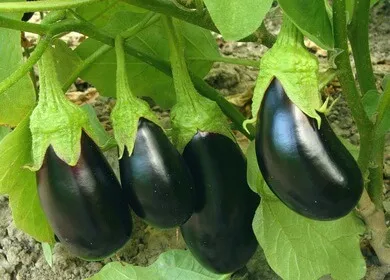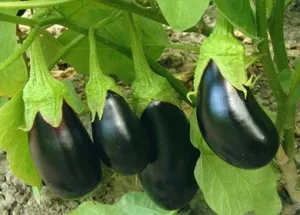
- Share on Facebook113
- Share on Pinterest
- Share on Twitter
Eggplant, a member of the nightshade family that also includes tomatoes and bell peppers, is an extremely versatile meal option. It also packs some powerful health benefits.
Eggplant is rich in fiber, which aids in digestion and protects your digestive tract. Studies have shown that eating eggplant on a regular basis may help guard against the onset of colon cancer. The fiber content of eggplant also makes you feel fuller for longer, reducing your cravings in between meals.
This nightshade is also high in calcium, iron, bioflavonoids, minerals and vitamins, including vitamin K. The essential phytonutrients found in eggplant, along with iron, can improve your circulation. This fruit (yes, it is technically a fruit) also supports optimal neural health. Many of the phytonutrients are found in the skin of the eggplant, so it is best not to peel it.
A high bioflavonoid content is one of the most nutritious aspects of the eggplant. These have been shown to reduce stress levels and lower blood pressure. A regular intake of eggplant, thanks to the combination of bioflavonoids and vitamin K, has been shown to strengthen capillaries and aid in preventing blood clots, making it a wonderful addition to a heart-healthy diet.
Eggplants can be cooked in almost any way you can imagine, with delicious results. They can be roasted whole, sliced and grilled, baked with an array of other veggies and served in stews. You can also mash roasted eggplant with some roasted garlic, add a bit of lemon juice and some Himalayan salt for a mouth-watering take on homemade baba ghanouj.
 Many vegetarians and vegans use eggplant as a meat substitute in their dishes. If you are looking to create a ‘meaty’ texture from your eggplant, slice the eggplant, coat the slices in a moderate amount of sea salt or Himalayan salt, wait about 30 minutes, and then press the slices between paper (or cloth) towels. Then, when you cook it, your eggplant will remain firm.
Many vegetarians and vegans use eggplant as a meat substitute in their dishes. If you are looking to create a ‘meaty’ texture from your eggplant, slice the eggplant, coat the slices in a moderate amount of sea salt or Himalayan salt, wait about 30 minutes, and then press the slices between paper (or cloth) towels. Then, when you cook it, your eggplant will remain firm.
Equipped with a ‘sponge-like’ quality, eggplant absorbs all of the other flavors that you add to it, helping to fuse the flavors into one synergistic dish. Try roasting it with some cut-up heirloom tomatoes, organic onions, garlic, bell peppers, olive oil and fresh basil leaves for a scrumptious flavor medley.
A final note: eggplant dishes make great leftovers, as the flavors become more deeply absorbed into the eggplant the longer it stands. So, cook up a big pot of your favorite eggplant recipe, and enjoy for days to come.
-The Alternative Daily
Source:
http://www.nytimes.com/2013/06/26/dining/praising-the-versatile-eggplant.html?_r=1
- Share on Facebook113
- Share on Pinterest
- Share on Twitter

